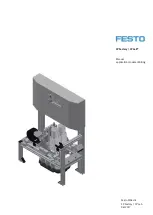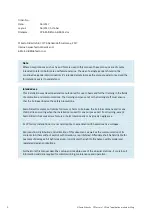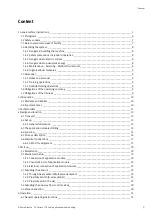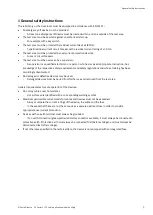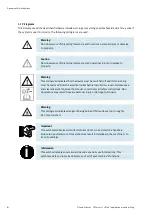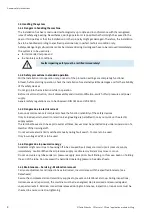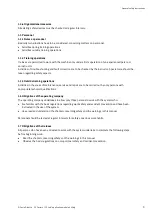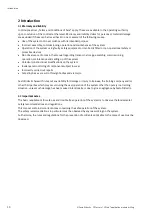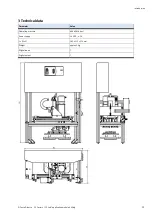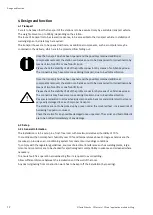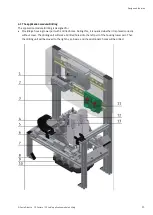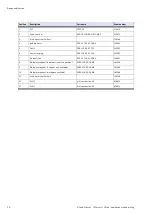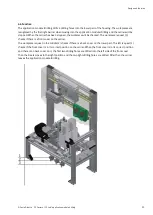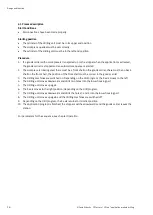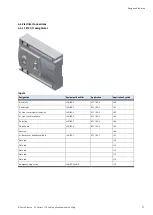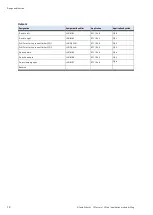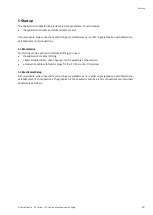
General safety instructions
© Festo Didactic CP Factory / CP Lab ° application module drilling
5
1
General safety instructions
The laboratory or the classroom must be equipped in accordance with EN 50191:
An emergency off device must be provided.
– At least one emergency off device must be located within, and one outside of the test area.
The test area must be secured against unauthorised start-up.
– For example with a key switch
The test area must be protected by residual current devices (RCDs).
– Type B residual current circuit breaker with a residual current rating of ≤ 30 mA
The test area must be protected by overcurrent protection devices.
– Fuses or circuit breakers
The test area must be overseen by a supervisor.
– A supervisor is a qualified electrician or a person who has received appropriate instruction, has
knowledge of the respective safety requirements and safety regulations and whose training has been
accordingly documented.
No damaged or defective devices may be used.
– Damaged devices must be barred from further use and removed from the test area.
General requirements for safe operation of the devices:
Do not lay cables over hot surfaces.
– Hot surfaces are identified with a corresponding warning symbol.
Maximum permissible current loads for cables and devices must not be exceeded.
– Always compare the current ratings of the device, the cable and the fuse.
– In the event that these are not the same, use a separate upstream fuse in order to provide
appropriate overcurrent protection.
Devices with an earth terminal must always be grounded.
– If an earth connection (green-yellow laboratory socket) is available, it must always be connected to
protective earth. Protective earth must always be connected first (before voltage), and must always be
disconnected last (after voltage).
If not otherwise specified in the technical data, the device is not equipped with an integrated fuse.

